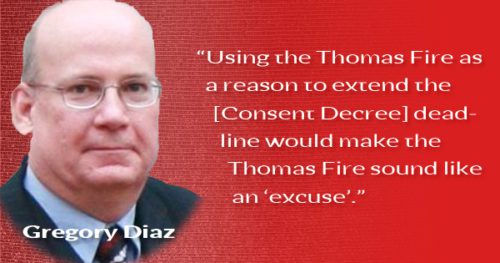Fresh Turmoil At Ventura WaterPure: What Are The Alternative Solutions for Wastewater Treatment?
The evidence continues to mount, proving a problem exists with Ventura Water, the Water Commission and VenturaWaterPure. At what point will the City Council stop ignoring the facts and confront the truth about VenturaWaterPure?
Looking The Other Way In The Past
A committee of concerned citizens went to each Councilmember in 2018 to show them Direct Potable Reuse (DPR)—the method of purification Ventura Water was pursuing at the time— was not approved and not yet deemed safe. When the Council presented that fact to Ventura Water, they changed course slightly to Indirect Potable Reuse (IPR). Still they didn’t drop VenturaWaterPure or challenge their assumptions.
The Carollo Report in 2019 presented several options to Ventura to VenturaWaterPure, many of which were less expensive. Ventura Water convinced the City Council to ignore the report’s options and choose VenturaWaterPure.
A September 12, 2019 report titled Ventura Water Supply Projects and Alternatives, commissioned by Ventura Water (Appendix E starting on pg. 405), shows estimated project costs of another $320 Million plus the annual operating expenses of $29.Million for VenturaWaterPure. Yet, the Carollo Report presented options costing a mere $50 Million for the project and operating costs of only $3.9 Million. The City Council overlooked the significant cost differential and stayed with Ventura Water’s proposed VenturaWaterPure.
The Most Recent Evidence
More damning evidence surfaced this month when Water Commissioner George Amandola resigned from the commission. Mr. Amandola explained why he left, citing various problems he saw within Ventura Water, the Water Commission, and the City Council.
His letter read:
Dear Members of the Ventura City Council,
It is with a heavy heart yet a resolute determination that I tender my resignation from the Ventura Water Commission, effective immediately.
This decision has not been arrived at lightly but has been necessitated by deep-seated concerns regarding the trajectory and management of VenturaWaterPure, as well as broader issues plaguing the Water Department organization.
 Throughout my time serving on the commission, I have been disheartened to observe a troubling trend of bureaucratic maneuvering, particularly concerning the handling of commission agendas, council disclosures, and public disclosures. There have been numerous instances where last-minute adjustments to agenda items were required by Commission vote to counteract staff attempts at manipulating certain voting items. These occurrences have unfortunately become all too frequent, significantly hindering our ability to address important matters effectively and fulfill our responsibilities with diligence.
Throughout my time serving on the commission, I have been disheartened to observe a troubling trend of bureaucratic maneuvering, particularly concerning the handling of commission agendas, council disclosures, and public disclosures. There have been numerous instances where last-minute adjustments to agenda items were required by Commission vote to counteract staff attempts at manipulating certain voting items. These occurrences have unfortunately become all too frequent, significantly hindering our ability to address important matters effectively and fulfill our responsibilities with diligence.
Additionally, the consistent scheduling of VenturaWaterPure and CIP discussions on the Council agenda late at night, often after 10pm or 11pm, does not foster transparency with the Ventura community at large. This timing undermines public engagement and limits the opportunity for meaningful community involvement in these crucial discussions.\Furthermore, the persistent absence of timely reporting and clear and comprehensive details within project management items, budget, and supplemental packages preceding meetings has significantly hampered commissioners’ ability to make well-informed decisions. Equally distressing is the subsequent lack of follow-up from staff regarding unresolved matters raised during meetings, exacerbating an atmosphere of opacity and impeding our ability to fulfill our duties diligently.
Moreover, the disregard and blatant dismissal of certain presentation format requests I have made for the Capital Improvement Plan by the general manager is deeply concerning.
My lack of confidence in the project management and financial planning for VenturaWaterPure stems from a myriad of disconcerting factors. Repeated oversights, escalating costs, a glaring lack of transparency from management, and an apparent reluctance to substantiate assumptions and alternatives with tangible evidence have all contributed to a palpable deficit in comprehensive planning and oversight. These shortcomings cast serious doubts on the initiative’s viability and fiscal prudence.
Additionally, I have observed a concerning confirmation bias within both staff and the City Attorney’s office, evident in their unwavering support for VenturaWaterPure despite valid concerns raised. Despite viable technical and financial avenues available to alleviate the burden on ratepayers, the City Attorney’s office has regrettably failed to challenge the Consent Decree through the “meet and confer” process, exacerbating an already precarious situation.
Furthermore, management’s subjective decisioning to take Foster Park Assets offline in preceding years raises significant red flags, hinting at a deliberate attempt to bolster the narrative of VenturaWaterPure’s indispensability. Such manipulative tactics only serve to deepen my skepticism regarding the integrity and motivations underpinning the initiative.
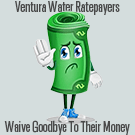 Of particular concern is the potential economic hardship VenturaWaterPure may impose on residents, especially those in District 1 and other vulnerable communities. The absence of a comprehensive economic study examining the ramifications of existing rate increases coupled with the inevitable VenturaWaterPure rate hikes underscores the urgent need for informed decision-making to mitigate adverse impacts on residents.
Of particular concern is the potential economic hardship VenturaWaterPure may impose on residents, especially those in District 1 and other vulnerable communities. The absence of a comprehensive economic study examining the ramifications of existing rate increases coupled with the inevitable VenturaWaterPure rate hikes underscores the urgent need for informed decision-making to mitigate adverse impacts on residents.
Moreover, the limitations imposed on the authority of the Water Commission, particularly its quasi-judicial capacity, are glaring omissions from the municipal code, rendering the commission toothless in effecting meaningful change. Staff’s adeptness at circumventing and manipulating the commission’s role, particularly in controlling information flow between the commission and the City Council, is deeply troubling and undermines the commission’s purpose and effectiveness.
Additionally, the lack of balance in the commission’s composition, as outlined in the municipal code, further compounds concerns. While intended to feature a mix of professionals and non-professionals, the current makeup deviates from this mandate. The presence of Commissioner Armbrister in a non-professional seat despite her professional background in water management raises legitimate questions about the commission’s legitimacy and adherence to residency requirements.
In light of these systemic concerns, urgent and comprehensive reform within the Ventura Water Commission is imperative to restore transparency, accountability, and effective governance. Without decisive action, the community’s best interests will continue to be sidelined, compromising the commission’s effectiveness.
While resigning from my position weighs heavily on me, I refuse to remain complicit in a system that obstructs meaningful change and neglects the welfare of the community. I trust that my resignation will serve as a catalyst for substantive reform and renewed commitment to transparency, accountability, and equitable access to essential services within Ventura Water.
I am profoundly thankful for the opportunity to have contributed to the Ventura Water Commission and treasure the invaluable experiences and insights gained during my tenure. I hold steadfast hope that the Council will heed the compelling reasons outlined in this resignation letter and take decisive action to enact essential reforms within the commission, its municipal code, and the leadership of the Water Department. By doing so, we can safeguard the future well-being of the Ventura community.
Thank you for your attention to this matter.
Sincerely,
George
George Amandola
Resident City of Sanbuenaventura (sic)- Council District 2
Key Points In The Letter
Mr. Amandola’s resignation letter highlights a stultified, bureaucratic, autocratic Ventura Water Department. It presents his lack of confidence in the project management and financial planning for VenturaWaterPure. It also demonstrates how Ventura Water has neutered the Water Commission and prevented it from doing its duty.
These are not frivolous accusations made by an outsider. These are observations made by an insider capable of seeing the entire landscape of what’s happening with VenturaWaterPure.
Editors’ Notes
Evidence of misrepresentation, mistakes and mismanagement surrounding VenturaWaterPure grows. Meanwhile, the project’s costs mount. Today, that costs half a billion dollars, but it’s reasonable to believe the costs will go even higher. With no ceiling on cost increases, Ventura Water ratepayers bear the burden. Soon, the cost of water will triple to pay for the project.

What more evidence does the City Council need to finally admit that there is a problem with the Water Department and the Water Commission spending $500,000,000 on a project that Ventura Water can do for hundreds of millions less? How long will the city hide its head in the sand before taking serious action?
City staff often use the Consent Decree as an obstacle in addressing Ventura’s water problems. This Decree really addresses two issues, and they must be handled separately. Part one is cleaning up the wastewater in the estuary. Extracting the wastewater from the estuary is being accomplished.
Part two is developing a practical use for extracted water. Ventura Water calls the recycled use of the extracted water Ventura WaterPure. Ventura Water mistakenly believes Ventura WaterPure must be a stand-alone facility built within the Consent Decree timeline. The Consent Decree requires neither.
The Consent Decree allows Ventura to extend the timeline under certain conditions. The first is financial feasibility. If Ventura Water can demonstrate that Ventura WaterPure is financially infeasible, the courts can extend the timeline. Additionally, Ventura can prove its sincere effort to comply with the Consent Decree. In that case, the court may extend the deadline if it deems the efforts reasonable and justified.
Another false belief is that Ventura must have a separate, stand-alone facility to treat the extracted water. Oxnard has an underutilized recycling facility that Ventura Water could use to treat the extracted water. However, Ventura Water has refused to consider this option seriously until now.
The City of Ventura must reconsider all options, including treating the wastewater in Oxnard. City officials must formally scrutinize the Oxnard option to be a fair comparison. The city must issue an up-to-date formal Request for Proposal (RFP) to the City of Oxnard and United Water. Oxnard’s and United’s responses must come directly from them (not via a Ventura Water Department Consultant) and be on their letterhead. Ventura WaterPure can no longer have an open-ended budget. It must have a cashflow projection that includes timelines, operating, maintenance and taxpayer fee schedules.
Demand Your City Councilmember Does The Following:
1) Get a new Request for Proposal (RFP) from the City of Oxnard and United Water.
2) Have Ventura Water produce a cash flow projection analysis.
3) Install a new Water Commission, that has the authority to manage this process and make decisions that are in the rate payer’s best interest.
Below you’ll find the photos of our current City Council. Click on any Councilmember’s photo and you’re email program will ready to write directly to that Councilmember.
Let them know what you’re thinking. Tell them what they’re doing right and what they could improve upon. No matter what you write, however, share your opinion. Participating in government makes things better because our city government is working for all of us.
 |
 |
|
 |
 |
|
 |
 |
|
 |
For more information like this, subscribe to our newsletter, Res Publica. Click here to enter your name and email address.





 Ventura Water’s first faulty assumption was debunked in 2016 by an expert panel appointed by the State Legislature. The panel concluded that even after treatment the water was unsafe for human consumption because microscopic contaminants and chemicals pose a danger to humans. The Ventura City Council didn’t learn of the 2016 report until March 2019.
Ventura Water’s first faulty assumption was debunked in 2016 by an expert panel appointed by the State Legislature. The panel concluded that even after treatment the water was unsafe for human consumption because microscopic contaminants and chemicals pose a danger to humans. The Ventura City Council didn’t learn of the 2016 report until March 2019. It’s up to the 2024 City Council to meet their fiduciary duty to Ventura’s citizens. This council has more information about costs and technologies than any previous council. Now is the time to examine all reliable alternatives before continuing with VenturaWaterPure. Past actions by City Councils are no longer relevant to any decisions this City Council takes because technological circumstances and costs have changed to achieve VenturaWaterPure’s goals.
It’s up to the 2024 City Council to meet their fiduciary duty to Ventura’s citizens. This council has more information about costs and technologies than any previous council. Now is the time to examine all reliable alternatives before continuing with VenturaWaterPure. Past actions by City Councils are no longer relevant to any decisions this City Council takes because technological circumstances and costs have changed to achieve VenturaWaterPure’s goals.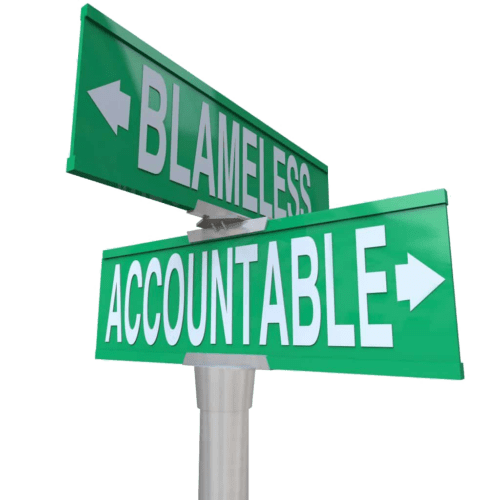 Meeting with Ventura Water’s counterparts is an ambiguous term. What does it mean exactly? Were new quotes or figures discussed? Was there anything that would resemble a Request for Proposal (RFP)?
Meeting with Ventura Water’s counterparts is an ambiguous term. What does it mean exactly? Were new quotes or figures discussed? Was there anything that would resemble a Request for Proposal (RFP)?


 Spreading $320 Million over ten years, divided equally among the 32,000 water ratepayers in Ventura, will cost about $83 more per month on your water bill. An extra 20-27 employees are required to operate the new facility, adding to the Ventura Water’s payroll, benefits and pensions. If Ventura Water adds the minimum number of new employees, using an average annual cost of $100,000 per person, plus benefits, will add $29.1 Million annually. Dividing $29.1 Million by 32,000 water ratepayers adds another $76 per month to each water bill.
Spreading $320 Million over ten years, divided equally among the 32,000 water ratepayers in Ventura, will cost about $83 more per month on your water bill. An extra 20-27 employees are required to operate the new facility, adding to the Ventura Water’s payroll, benefits and pensions. If Ventura Water adds the minimum number of new employees, using an average annual cost of $100,000 per person, plus benefits, will add $29.1 Million annually. Dividing $29.1 Million by 32,000 water ratepayers adds another $76 per month to each water bill. Ventura Water has already spent eight years to meet the demands of a Federal Consent Decree. Ventura must fully comply with the removal of remove tertiary treated wastewater from the Santa Clara Estuary by 2025. To achieve this mandate, VenturaWaterPure was set in motion to recycle its wastewater into something useful.
Ventura Water has already spent eight years to meet the demands of a Federal Consent Decree. Ventura must fully comply with the removal of remove tertiary treated wastewater from the Santa Clara Estuary by 2025. To achieve this mandate, VenturaWaterPure was set in motion to recycle its wastewater into something useful.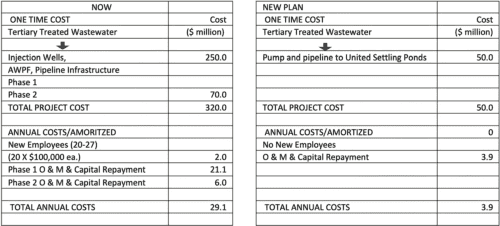
 Saving $270 million by redirecting the Santa Clara Estuary tertiary treated wastewater to the United Water Saticoy spreading grounds does not derail the other Ventura Water goals. With the continued construction of the State Water Project, State Water will provide an additional water resource to compliment the river, groundwater and recycling programs in place. The
Saving $270 million by redirecting the Santa Clara Estuary tertiary treated wastewater to the United Water Saticoy spreading grounds does not derail the other Ventura Water goals. With the continued construction of the State Water Project, State Water will provide an additional water resource to compliment the river, groundwater and recycling programs in place. The 
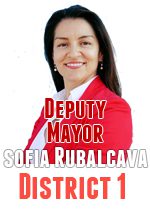








 Candidates for the 2020 City Council election must concentrate on the Wishtoyo Consent Decree, and the impact of the decree in the next decade. That Federal Decree requires Ventura to stop putting a majority of its treated wastewater into the Santa Clara River estuary, beginning in January 2025 through 2030. To do so will be an enormous cost to the city.
Candidates for the 2020 City Council election must concentrate on the Wishtoyo Consent Decree, and the impact of the decree in the next decade. That Federal Decree requires Ventura to stop putting a majority of its treated wastewater into the Santa Clara River estuary, beginning in January 2025 through 2030. To do so will be an enormous cost to the city. Ventura Water has confused the City Council by combining two different ideas to falsely heighten the urgency to drink wastewater. In 2011, Venturans were told, “We are short of water.” Ventura Water proposed treating the wastewater we currently dump into the Santa Clara River into potable water at the cost of $1 Billion.
Ventura Water has confused the City Council by combining two different ideas to falsely heighten the urgency to drink wastewater. In 2011, Venturans were told, “We are short of water.” Ventura Water proposed treating the wastewater we currently dump into the Santa Clara River into potable water at the cost of $1 Billion.  Ventura Water will undoubtedly request a water rate increase from this next City Council. They will claim the money is for VenturaWaterPure or to improve the city’s water infrastructure. Water rates already went up by $220 million with water and wastewater increases in 2012-13. Any Councilmember and any candidate for City Council should be able to explain how Ventura Water spent the $220 million and why another rate hike is needed.
Ventura Water will undoubtedly request a water rate increase from this next City Council. They will claim the money is for VenturaWaterPure or to improve the city’s water infrastructure. Water rates already went up by $220 million with water and wastewater increases in 2012-13. Any Councilmember and any candidate for City Council should be able to explain how Ventura Water spent the $220 million and why another rate hike is needed. Ventura has 555 homeless people, according to the 2019 Point-in-Time count. Meredith Hart, Director of Ventura’s Safe & Clean program, believes the 2020 count will be higher. Ventura spends on its homeless are between $3.89-$4.59M per year.
Ventura has 555 homeless people, according to the 2019 Point-in-Time count. Meredith Hart, Director of Ventura’s Safe & Clean program, believes the 2020 count will be higher. Ventura spends on its homeless are between $3.89-$4.59M per year.



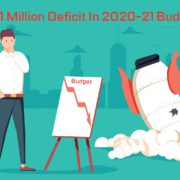


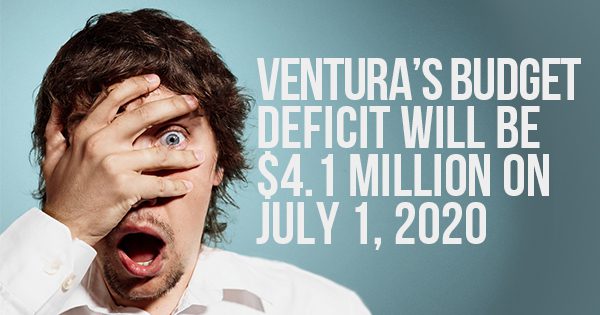 Today’s Council is still operating on the 2019-2020 budget that shows everything is fine. In six months we will be in a new budget cycle, how does that look? The city staff projects a “most likely” budget scenario that will have a shortfall of $4.1M. How can the seven members of the City Council take action to save jobs and essential services for the citizens of Ventura?
Today’s Council is still operating on the 2019-2020 budget that shows everything is fine. In six months we will be in a new budget cycle, how does that look? The city staff projects a “most likely” budget scenario that will have a shortfall of $4.1M. How can the seven members of the City Council take action to save jobs and essential services for the citizens of Ventura?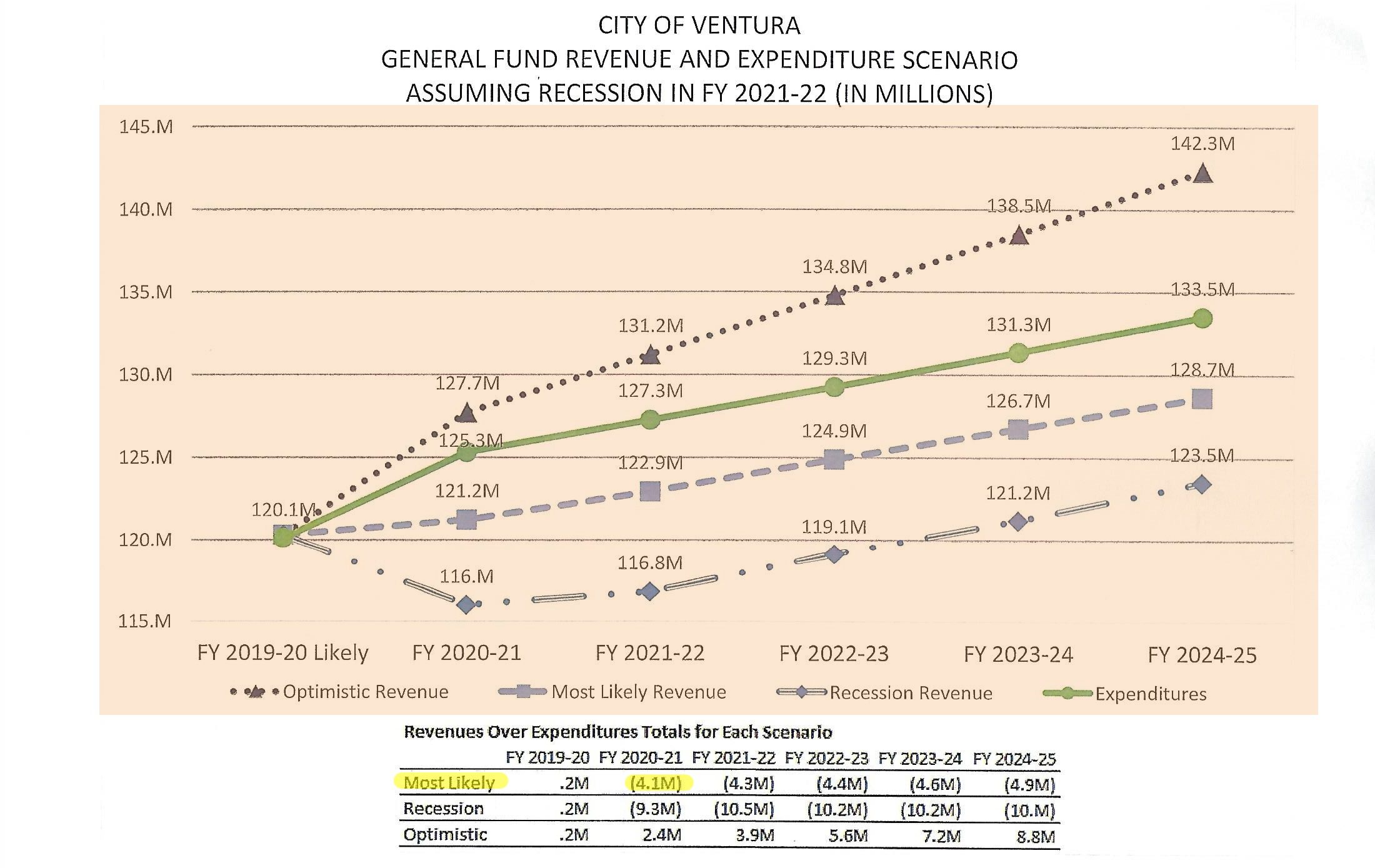
 Reduce overtime for city employees. The largest single expense category in the city is staff salaries and benefits. Reducing overtime might save as much as $5.6 million in the budget.
Reduce overtime for city employees. The largest single expense category in the city is staff salaries and benefits. Reducing overtime might save as much as $5.6 million in the budget. Review the money Ventura pays to support the Ventura County Museum. This option will save $250,000 per year.
Review the money Ventura pays to support the Ventura County Museum. This option will save $250,000 per year.  Evaluate Community Granting Programs. The amount of potential savings is not listed. This category includes programs like Community Access Partners (CAPS). CAPS received
Evaluate Community Granting Programs. The amount of potential savings is not listed. This category includes programs like Community Access Partners (CAPS). CAPS received 


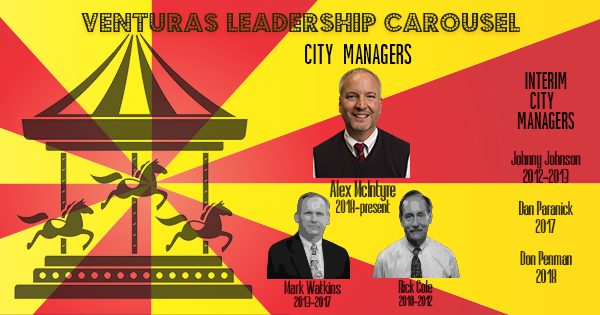 It’s remarkable that the city accomplished anything in the 2010s. We had three City Managers and three Interim City Managers. No one person was in the role for more than three years. Turnover created a leadership vacuum that minimized any chance for meaningful change.
It’s remarkable that the city accomplished anything in the 2010s. We had three City Managers and three Interim City Managers. No one person was in the role for more than three years. Turnover created a leadership vacuum that minimized any chance for meaningful change.
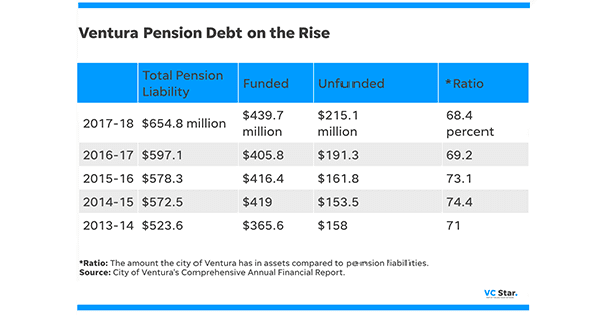
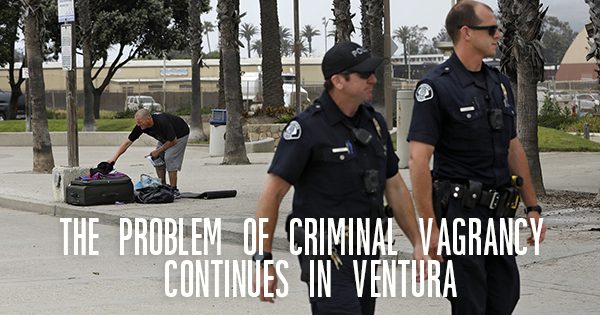 Sounds good, right? That is until you see the price tag. Developers don’t just build housing projects; they construct ridiculously overpriced, overbuilt housing projects. (Keep in mind Ventura’s permitting fees and stringent building codes). Cities and counties create massive bureaucracies. The nonprofits don’t just run these projects; they operate vast bureaucratic empires. These fiefdoms have overhead, marketing budgets, and executive salaries that do nothing for the homeless. They do not overpay the workers in the shelter.
Sounds good, right? That is until you see the price tag. Developers don’t just build housing projects; they construct ridiculously overpriced, overbuilt housing projects. (Keep in mind Ventura’s permitting fees and stringent building codes). Cities and counties create massive bureaucracies. The nonprofits don’t just run these projects; they operate vast bureaucratic empires. These fiefdoms have overhead, marketing budgets, and executive salaries that do nothing for the homeless. They do not overpay the workers in the shelter.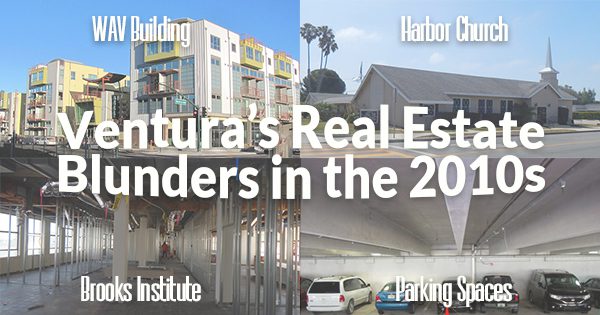
 The concept flopped. The condos finally sold in 2018 for a fraction of what the city hoped to get. Buyers paid $413,000-$470,000 for the units. Once the sale completed, the mortgage holder, Chase, was repaid both principal and interest. Ventura Water was left holding the bag, however, for the $1 million “loaned” to the city. The city received only $105,893 from the sale of the condos after paying the Construction Loan, sales commissions, sales expenses, the City Deferred Impact Fee Loan and the developer.
The concept flopped. The condos finally sold in 2018 for a fraction of what the city hoped to get. Buyers paid $413,000-$470,000 for the units. Once the sale completed, the mortgage holder, Chase, was repaid both principal and interest. Ventura Water was left holding the bag, however, for the $1 million “loaned” to the city. The city received only $105,893 from the sale of the condos after paying the Construction Loan, sales commissions, sales expenses, the City Deferred Impact Fee Loan and the developer.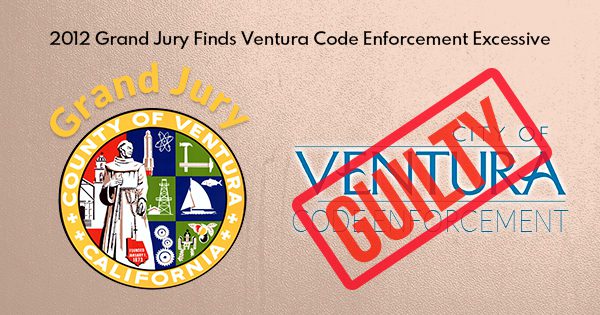 City government and Code Enforcement officers serve a valuable and essential service to our community until they start acting like bullies with their use of force, intimidation, abuse of power and excessive punishment of the citizenry.
City government and Code Enforcement officers serve a valuable and essential service to our community until they start acting like bullies with their use of force, intimidation, abuse of power and excessive punishment of the citizenry.



 For the second time in four years,
For the second time in four years,  VenturaWaterPure will cost $1 billion over 30 years. That’s a considerable sum of money for the community to absorb. Water bills will double to pay for VenturaWaterPure’s infrastructure alone. Operations and maintenance costs will add even more. Remember, water costs already went up by $220 million with water and wastewater increases in 2012-13.
VenturaWaterPure will cost $1 billion over 30 years. That’s a considerable sum of money for the community to absorb. Water bills will double to pay for VenturaWaterPure’s infrastructure alone. Operations and maintenance costs will add even more. Remember, water costs already went up by $220 million with water and wastewater increases in 2012-13. Ventura Water has confused the City Council by combining two different ideas to falsely heighten the urgency to drink wastewater. Since 2011, the campaign has been “We are short of water,” they say, “and the best way to meet that shortage is to drink wastewater.”
Ventura Water has confused the City Council by combining two different ideas to falsely heighten the urgency to drink wastewater. Since 2011, the campaign has been “We are short of water,” they say, “and the best way to meet that shortage is to drink wastewater.” Ventura has enough drinking water for the next 15 years at current consumption rates, according to the
Ventura has enough drinking water for the next 15 years at current consumption rates, according to the  IPR is inefficient and will not meet Ventura Water’s projections. Orange County and Monterrey use IPR already. IPR shows a net water loss of 23%, based on Orange County’s experience. If VentuaWaterPure treats 4.5 million gallons per day of tertiary water, this will yield approximately 3.5 million gallons per day of drinking water, or about 3,900 Acre-Feet per year (AFY). According to the Final Environmental Impact Study, that is 1,500 AFY short of the 5,400 AFY needed to meet Ventura’s estimated demand.
IPR is inefficient and will not meet Ventura Water’s projections. Orange County and Monterrey use IPR already. IPR shows a net water loss of 23%, based on Orange County’s experience. If VentuaWaterPure treats 4.5 million gallons per day of tertiary water, this will yield approximately 3.5 million gallons per day of drinking water, or about 3,900 Acre-Feet per year (AFY). According to the Final Environmental Impact Study, that is 1,500 AFY short of the 5,400 AFY needed to meet Ventura’s estimated demand. One billion dollars is a large bet to place with the taxpayer and ratepayer money for a process that is questionable among scientists. There are cost-effective alternatives available, but it’s unlikely they’ve been examined since the initial decision to create VenturaWaterPure was made in 2011. Times change. Circumstances change. Now is the time to reconsider options to be sure we’re making the best choice available.
One billion dollars is a large bet to place with the taxpayer and ratepayer money for a process that is questionable among scientists. There are cost-effective alternatives available, but it’s unlikely they’ve been examined since the initial decision to create VenturaWaterPure was made in 2011. Times change. Circumstances change. Now is the time to reconsider options to be sure we’re making the best choice available.

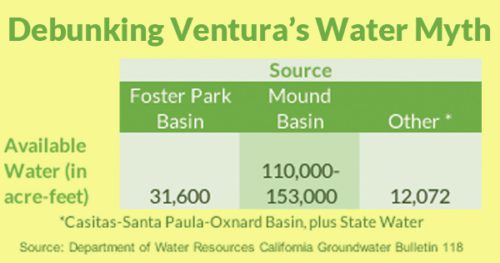

 Costing over $500,000,000 is not the only issue. The more significant issue is that the City Council assumed DPR water was safe to drink.
Costing over $500,000,000 is not the only issue. The more significant issue is that the City Council assumed DPR water was safe to drink.  However, the Consent Decree says the court can extend the time limit in the event of construction constraints, financing problems, or an emergency. It requires Ventura to petition the court requesting an extension, or an agreement with the plaintiff and their lawyers. That has not happened.
However, the Consent Decree says the court can extend the time limit in the event of construction constraints, financing problems, or an emergency. It requires Ventura to petition the court requesting an extension, or an agreement with the plaintiff and their lawyers. That has not happened. On February 4, 2019, Council Member Jim Friedman asked our City Attorney, Gregory Diaz about extending the deadline.
On February 4, 2019, Council Member Jim Friedman asked our City Attorney, Gregory Diaz about extending the deadline.